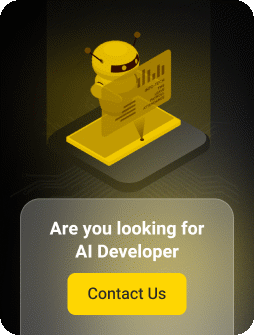DeepSeek, a new AI tool from China, quickly became the most downloaded app on the Apple Store, shaking up the tech community and the stock market.
Released on January 20, this app gained quick praise from AI experts and soon caught the eye of the entire tech industry. Its impact was so powerful that Nvidia’s stock fell 17% in just one day, as people worried that DeepSeek could reduce the need for Nvidia’s high-tech chips.
But what is DeepSeek, how does it work, who made it, and can it really stand up to OpenAI’s ChatGPT?
What Is DeepSeek?
DeepSeek AI, based in Hangzhou, China, develops cutting-edge language models more economically than its competitors.
Founded in 2023 by Liang Wenfeng from the Chinese hedge fund High-Flyer, DeepSeek has made significant strides with a modest budget. For instance, its main model, DeepSeek-R1, was developed for just $6 million, a fraction of the $100 million spent by OpenAI for a comparable model in the same year.
In early 2025, DeepSeek launched a free chatbot app based on the R1 model, quickly becoming the most downloaded app on the U.S. iOS App Store. This surge in popularity affected the stock market, notably causing an 18% drop in Nvidia's shares due to fears of reduced dependency on their chips.
DeepSeek champions open-source AI, sharing its algorithms and training processes with the public. This transparency allows users worldwide to adapt and inspect their models. The company's commitment to innovation extends to its recruitment strategy, actively seeking young talent from top Chinese universities and experts from various fields to broaden the knowledge base of its AI models.
The Story Behind DeepSeek's Creation - Who Created It?
DeepSeek was founded by Liang Wenfeng, who is a co-founder of High-Flyer, a hedge fund that focuses on quantitative trading in China. Originally, the fund aimed to create a high-speed trading algorithm that could make quick decisions in the stock market. Unfortunately, this project didn't work out as planned.
After the trading algorithm project failed, the team found themselves with a lot of unused Nvidia graphics cards. Instead of letting these resources go to waste, Liang Wenfeng decided to use them for a new project. This led to the creation of DeepSeek as a side project, utilizing the leftover GPUs to dive into the world of artificial intelligence.
DeepSeek's AI Technology: An Inside Look at Functionality
But how does DeepSeek work? It harnesses advanced machine learning techniques to power its large language models (LLMs), such as the notable R1 and V3 models.
Here’s a closer examination of the sophisticated process that enables these models to mimic human-like text generation:
Data Collection and Model Training
Extensive Data Sources: DeepSeek's models are trained on a broad spectrum of text data, including literature, academic papers, internet content, and more, ensuring a comprehensive understanding of language nuances.
Efficient GPU Usage: The models employ Nvidia H800 GPUs, specifically chosen for their efficiency in processing large-scale computations swiftly and cost-effectively. The V3 model, for instance, used 2,048 GPUs for a two-month training period, significantly reducing overhead costs.
Cost-Effective Training: DeepSeek strategically minimizes financial expenditure on model training. The V3 model’s training involved 2.8 million GPU hours but was accomplished at an impressive cost of just $5.5 million, far below industry norms for such extensive computational tasks.
Advanced Capabilities and Outputs
Language Processing Excellence: Post-training, these models exhibit exceptional capabilities in understanding and generating text that closely resembles human conversational and written styles. This ability is pivotal for applications ranging from chatbots to complex problem-solving tools.
Open-Source Contribution: In line with fostering innovation, DeepSeek offers its technology under an open-source license, enabling developers globally to adapt, enhance, and apply the models in varied contexts. This openness not only drives technological improvement but also democratizes AI advancements.
Optimized Operational Efficiency
Reduced Running Costs: DeepSeek’s operational model focuses on efficiency, keeping running costs low, which is crucial for maintaining scalability and extending AI’s reach to more users and applications.
Through a blend of cutting-edge technology and strategic resource management, DeepSeek not only champions cost-efficiency but also maintains competitive performance levels, making it a standout player in the global AI landscape. This approach not only proves its technical prowess but also its commitment to accessible and sustainable AI development.
In-Depth Comparison - DeepSeek vs. ChatGPT
When it comes to choosing between AI models like DeepSeek and ChatGPT, understanding their strengths and limitations is crucial. Each model offers unique advantages tailored to specific tasks and requirements.
Here’s a detailed look at how each performs across different aspects of AI application:
|
Feature |
DeepSeek |
ChatGPT |
|
Programming Support |
Offers an inbuilt preview option, allowing developers to see and adjust outputs before finalization, enhancing programming workflows. |
Lacks an inbuilt preview, focusing more on direct interaction and less on developmental or iterative adjustments. |
|
Content Creation |
Not as effective for creative content due to regulatory content restrictions which might limit topical variety. |
Highly adept at creating varied and imaginative content, making it ideal for roles requiring creative and unrestricted expression. |
|
Generative AI Capabilities |
Competent in generating AI-driven outputs, though the scope is influenced by content restrictions specific to sensitive topics about China. |
Demonstrates robust generative AI capabilities across a wide range of topics without any imposed restrictions, suitable for unrestricted AI applications. |
|
Content Censorship |
Imposes content censorship aligned with Chinese regulatory standards, limiting discussions on sensitive political topics. |
Operates without content censorship, facilitating open and comprehensive discussions on a global scale, including sensitive political areas. |
Choosing the Right AI Tool
The best AI model for you depends on your specific needs and goals.
For developers, DeepSeek might be the preferred choice due to its inbuilt preview option that aids in refining and adjusting outputs seamlessly, a valuable feature for programming and development tasks. Additionally, all of DeepSeek's models are open-source and free, which is especially appealing for those on a budget or looking to modify and enhance the models without financial barriers.
On the other hand, if you are involved in content creation, generative AI tasks, or require unrestricted discussion capabilities, ChatGPT may be more suitable. It excels in producing diverse and unrestricted content, making it ideal for creative professions. However, accessing the more advanced capabilities of ChatGPT might require a financial investment, as some of the higher-end models are not free.
Ultimately, the choice between DeepSeek and ChatGPT should align with your specific requirements. Whether that's the need for cost-effective, open-source solutions for development, or the demand for creative freedom and expansive generative capabilities in content production.
Bottom Line - Harnessing DeepSeek's Unique Advantages
Choosing DeepSeek as your AI tool aligns well for developers and programmers looking for a practical, innovative solution. Its unique inbuilt preview feature enhances coding workflows by allowing real-time adjustments before finalization, providing a significant advantage in development environments. Moreover, DeepSeek's commitment to open-source availability ensures that all its models are accessible at no cost, offering an economical and flexible option for users needing to customize or extend AI capabilities. For those prioritizing cost-efficiency, customization, and efficient programming tools, DeepSeek presents a compelling choice in the rapidly evolving AI landscape.
















